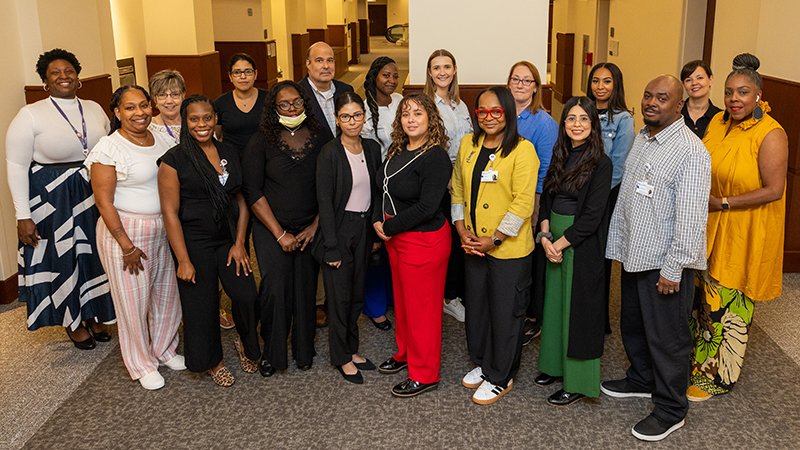Understanding Gender Identity
How Inclusivity Translates to Better Care
Updated December 2023
People often use pronouns without even thinking about it. For those who do not identify with their assigned sex at birth or as male or female, it is a sign of respect and consideration to use their correct pronouns. Examples of pronouns include:
- She/her/hers
- He/him/his
- They/them/theirs
Ultimately, gender identity comes from an internal sense.— Sumanas W. Jordan, MD, PhD
Not using the correct pronouns can impact a person's physical and mental health. At Northwestern Medicine, care teams are able to enter patients' pronouns into their medical records, and patients can enter their own pronouns via their MyNM patient portal. This helps ensure patients feel comfortable and respected when receiving care.
This is how patient pronouns appear to clinicians reviewing a patient's health records:

Beyond pronouns, those who do not identify as male or female now have a widely available, legally recognized third option for legal sex designation: "X." This option appears on many federal identification documents, including passports, as well as state documents such as birth certificates, state IDs and driver's licenses. Northwestern Medicine added "X" as a sex designation option in health records in December 2023.
What Inclusive Care Looks Like
Almost half of transgender adults report having a negative experience with health care. Inclusive care like that provided at the Northwestern Medicine Gender Pathways Program, the Northwestern Medicine Gay and Bisexual Men's Urology Program and the Northwestern Medicine Center for Fertility & Reproductive Medicine is helping to reverse that. All of these programs are led by teams that are committed to providing care in a supportive, trusted environment tailored specifically to gender nonbinary and LGBTQ+ people.
"Everyone's journey is different, but ultimately, gender identity comes from an internal sense. It's not determined by body parts," says Sumanas W. Jordan, MD, PhD, plastic surgeon and medical director of the Gender Pathways Program. "By recognizing a person's identity, you are acknowledging their journey."
Know Common Sex- and Gender-Related Terms
Here are some terms to know.
Gender identity: A person's internal sense of being male, female, both or something else. It can be the same as the sex a person is designated at birth or differ from it. Part of understanding the importance of using someone's correct pronouns means understanding the complexity of gender identity. This is especially true now, as the use of nonbinary pronouns is on the rise.
Sex: A person's biological and anatomical status assigned at birth. Sex is based on a person's anatomy. It can be male, female or intersex. Intersex is a term used to describe people who have reproductive anatomy, chromosomes or hormones that do not fit into the categories of male and female.
Sexual orientation: A person's physical, romantic, sexual and emotional attraction to others. This is separate from gender identity. Sexual orientation describes who a person is attracted to, while gender identity describes who a person is.
Gender expression: A person's outward presentation of their gender identity. This is typically through their appearance, dress and behavior. It's important to note that not everyone feels comfortable expressing their gender identity.
Cisgender person: A person whose gender identity matches their sex assigned at birth.
Transgender or trans person: A person whose gender identity does not align with the sex they were assigned at birth.
Nonbinary person: A person whose gender identity is not exclusively male or female. Other terms nonbinary people may use include gender nonconforming, genderqueer or gender-diverse.
Genderfluid person: A person whose gender identity changes over time or at different times.
Genderqueer person: Similar to genderfluid, this is a person whose gender identity falls outside of male or female, and is beyond genders or is some combination of genders.
Offer Your Pronouns
For cisgender people, sharing your pronouns shows others that you recognize the importance of correct pronoun use. It can help build trust and make others feel safe. In addition, by accepting and understanding the fluidity of gender, you can be an ally for those who are transgender and gender nonbinary.
Simple steps like these help others feel supported and contribute to better, more inclusive health care.






